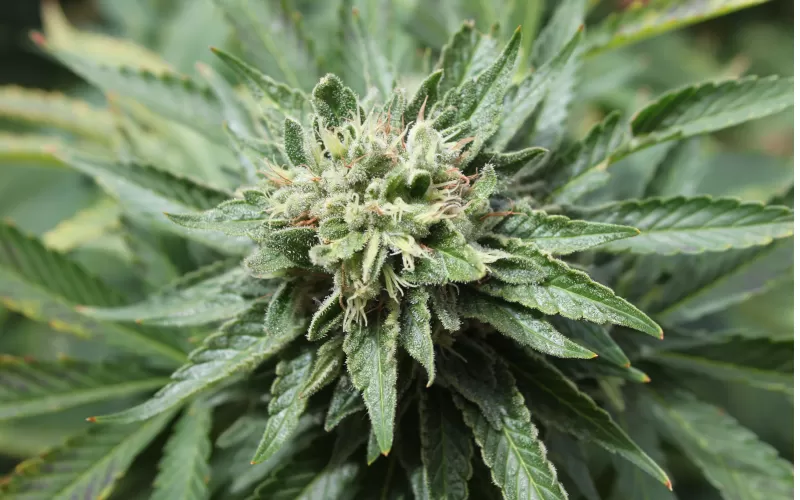
How long does it take to grow a marijuana light plant?
Impatience is not recommended in almost all aspects of life, one of the few things I have come to realise, but when it comes to growing cannabis it must be pointed out that it is a fundamental aspect! The correct development in time and form of our plant will be what marks the difference between a good plant with big flowers, fragrant terpenes, or a sad plant with very few flowers.
Today we are going to talk about the regular development time, without forcing, and the different stages one has to go through before reaching the final goal
In this article we will try to guide you in the best possible way so that you can start growing your own legal hemp.
Germination of cannabis seeds
We define the germination phase as the period in which the seed develops into a seedling. If we were using cannabis cuttings this germination time would cover from the moment of cloning until the first roots emerge.
Germination techniques are of different types. The most widely used and recommended is that which uses a wet napkin or paper towel as a base for the seed;
However, there are many who do it by other less recommended methods: on wet cotton, directly on the ground or jiffy disc or in water.
For all other hypotheses, this one is relative. It will depend, not only on the type of variety, the brand, but on the quality of the seed itself. Some determining factors will be the age of the seed, whether or not it is fertile, or the way it has been stored.
The time it takes for the seedling to germinate is usually around 24 to 72 hours, although it is not uncommon for this to take up to 5 or even 8 to 10 days. Of course, take into account the conditions of water and humidity, oxygenation and, above all, that the temperature during this phase ranges between 21 and 24ºC.
At this stage you can use Biobizz Toot Juice, a 100% organic root stimulator.
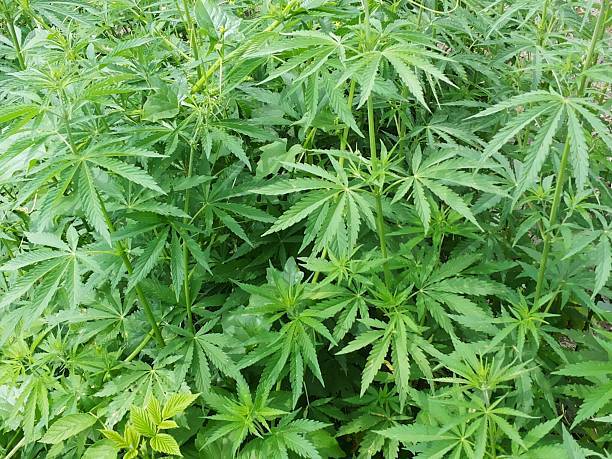
The vegetative phase
It is the central phase in the development of our plant and certainly the most important. The entire development of the plant depends on this phase.
After we have transplanted, the growth phase will begin. As its name indicates, in it our plant will achieve its growth and acquire the necessary morphology and size to procure in its development the next phase, flowering.
As we all know, the photoperiod during this phase will be longer than before and after. As a rule, eighteen hours of light for six hours of darkness per day is recommended. The right balance between light and dark is the key to its perfect development.
Not only will light be important (through photosynthesis), but those hours of absolute darkness will also be crucial, as this is when the gas exchange essential for plant cell metabolism takes place.
Some growers use 24 hours of light to make it quicker, but the plant will suffer, be weaker and more susceptible to pests.
This period will last more or less depending on the type of seed, variety and/or type of crop. Thus, auto-flowering will be faster than feminised and, at the same time, indoor crops will generally be faster than outdoor grow ones. Similarly, using a higher power light source will result in faster growth than lower power bulbs.
It is difficult to say exactly how long the growing phase lasts, like any other period, due to the amount of environmental, plant and external factors (fertilisers and grower expertise) that can mark the harvest. Generally, indoors growing, we will talk about 3 to 6 weeks (21 to 45 days) for auto-flowering and about 6 to 8 weeks for feminised.
Although regular and feminised crops tend to have an outdoor season of around 8-9 months of growth, in an indoor crop we can decide on the climatic and environmental conditions by trying to force the growth more than usual and shorten its ordinary cycle.
So if we are in an indoor environment, with artificial lights, we can decide when the plant is of an appropriate size and when it is time to change the photoperiod to start the flowering cycle.
At this stage you can use Bio Grow, which adapts perfectly to soil mixes and different types of substrate.
Pre-flowering and flowering!
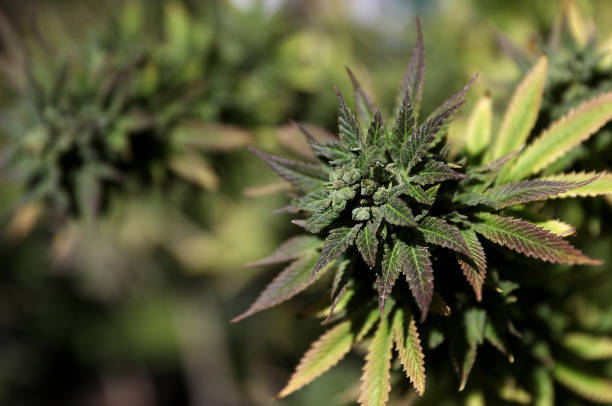
Its start will depend, no longer exclusively on the growth time we give the plant, but also on whether it has the appropriate characteristics to support those precious shoots that will be developed and thus bear the weight of the 'tops'.
So if, a month after germination, we see that our plant is weak or small and without any sign of inflorescence, we should concentrate more on the growth phase.
After the pre-flowering phase the plant will start to grow bigger and the flowers will start to smell better. If during the vegetative phase we have been careful with the various nutrients, the pot, and the plant has grown strong and healthy, we will see the flowers grow day by day. In this phase we can help ourselves with suitable flowering products and other supplements such as flowering boosters, which we will discuss in another article.
If we are talking about autofierents, we will find the days needed for the vegetative and flowering phases on the packaging. If we are talking about normal or feminised seeds, we can always tell by reading the packaging if the plant needs 60, 90 or even 120 days to flower.
In warm weather we should be careful to remove the yellow leaves, only the yellow ones, watching the flowers change from white to orange/red, which also depends on the variety of plant we are growing. Once all the pistils are coloured our plant will be ready for harvest. Many growers decide on the percentage of flower colouring, which influences the effect.
The important thing when deciding on the end of flowering and then cleaning the roots and cutting the plant is basically that we wait until the buds have fully developed. As mentioned the supplier will give us an indication of the timing but the essential thing is that we observe that the buds fatten up to cover or be buried in it most of the pistils.
Once developed, the harvest time will be characterised by the ripening and progressive oxidation of the pistils and trichomes, acquiring that characteristic amber/honey colour. In Italy this is October/November, weather permitting. The autoflowering will generally complete its final development in about 6 to 9 weeks, depending on the feminized varieties.
We can always decide to force a cannabis plant to flower as described in this article.
At this stage you can use Bio Bloom and Delta 9, which will increase resin and trichomes, giving them greater weight and final quality.
Drying weed
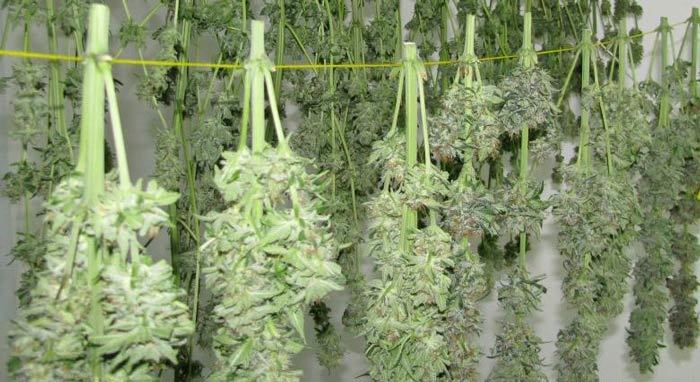
A distinction must be made between drying and polymerisation. Drying is the first of the treatments to which we have to of the treatments to which we must subject our crop.
Basically, they consist of placing all cut and well-groomed and cleaned buds on a drying net in a dark, cool and dry place (remember to
(Remember to clean the roots with plenty of water at the end of the harvest). This is done by rotating the buds in the net or netting day by day in order to avoid them becoming deformed and settling on the same side.
This process can take, depending on the location, the geographical area, then the humidity of the place from two to four or more weeks.
However, the identifying mark of a well-dried head is to be able to bend its stem, to be able to feel its crock but without breaking, just bending.
Conservation
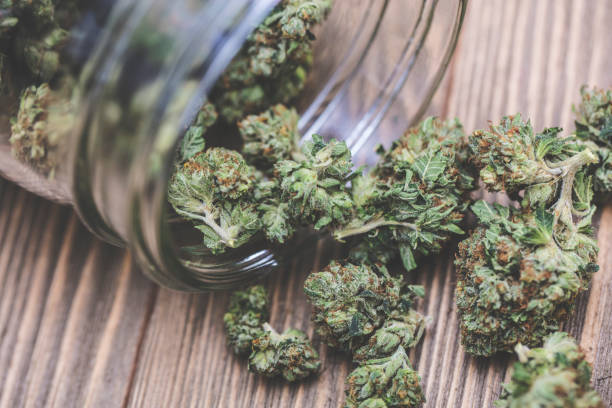
Simply remove and store all the sprouts in a container and let it rest with continuous aeration. Storage can be done in different containers, whether plastic, glass or wood; glass and wood are the most recommended as they do not emit toxic substances or odours.
The container in which we store the collection should be stored in the same way in a dark, cool and dry place. The only thing we need to do is to open the container every day for about five minutes so that the little moisture released by the stem is gradually lost.
This process usually takes between 2 and 6 weeks. The right point for storage will be when the branch breaks if pressed lightly.
When its stem bends, does not break, does not emit the smell of marijuana but of simple grass, it is a sign that it still retains some of its chlorophyll.
Today, there are several on the market such as Boveda, which has found a solution to the widespread problem of proper storage of cannabis with silica gels that regulate the humidity of the crop once stored.
Marijuana takes a long time to develop fully and unforced around two to three months for auto-flowering plants and five to seven months for plants from normal or feminised seed, depending on the type of cultivation and care. We must also take into account drying and curing, which will take about a month or so.
We repeat that, of course, depending on the care we give the plant, as well as the variety we choose, the timing of each phase will be greater or lesser and, consequently, of its complete development and therefore production. The so-called feminised varieties will take longer to produce buds; a little less time will be taken by the auto-flowering and even less, the new "fast versions" supplied by companies such as Sweet Seeds.
Humidity control for crop preservation
Boveda sachets are used to regulate the humidity for storing the crop of already dried flowers.
Boveda is a world leader in humidity control and the line of sachets can be used in a wide range of relative humidity levels (13-95%) to regulate the precise humidity for any item it is packed with.
They fit perfectly into vacuum jars, glass jars and any crop storage container.
The right moisture during storage maximises colour, flavour, aroma and essential properties.
"We have talked quickly about the main stages of growing a cannabis plant, but this is just a basic introduction to the world of
cultivation.
We will deal with self-fertilizing marijuana seeds in a
separate article, because even though they are more delicate and have a
lower yield they deserve respect, as under optimal conditions there are
plants that need only two months to complete their full development."
 Italiano
Italiano Español
Español English
English Français
Français Deutsch
Deutsch